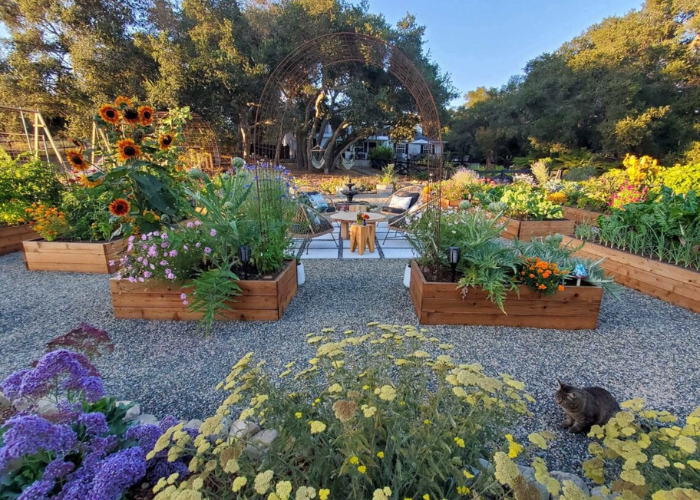
In an era defined by rapid urbanization, technological advancement, and environmental concerns, the allure of returning to a simpler, more sustainable way of life has captured the imagination of many. The concept of a homestead, once associated with sprawling rural properties, has evolved to find a place within urban and suburban settings. Homestead haven is not just a retreat to the past, but a harmonious blend of traditional practices and modern knowledge that empowers individuals to live more sustainably while nurturing a deeper connection to the Earth. In this comprehensive guide, we will delve into the principles and practices of creating a homestead haven, focusing on sustainable living and gardening right in the comfort of your own home.
The Essence of Homestead Living
Homesteading is about embracing self-sufficiency and reducing our carbon footprint while fostering a relationship with nature. It’s not just a lifestyle choice; it’s a conscious decision to live more intentionally and responsibly. A homestead haven is a place where sustainable practices flourish, and every aspect of life – from energy consumption to food production – is approached with mindfulness.
Designing Your Homestead Haven
Evaluate Your Space
Whether you have a sprawling backyard or a compact balcony, there are ways to create a homestead haven that suits your space. Assess the available area and consider factors like sunlight, wind patterns, and water access. This evaluation will guide the layout and design of your homestead.
Zone Planning
In permaculture, an approach that mimics natural ecosystems, zoning is a key concept. Design your space with zones based on frequency of use and resource needs. For instance, zone 0 could be your kitchen garden, while zone 5 might be a wild area left to nature. This strategic design enhances efficiency and minimizes energy expenditure.
Maximize Resources
Homesteading encourages a symbiotic relationship with the environment. Collect rainwater, compost kitchen waste, and utilize greywater for irrigation. Reuse materials creatively, transforming discarded items into functional elements within your haven. Embrace renewable energy sources like solar panels to power your home sustainably.
Sustainable Gardening Practices
Choose Native Plants
Opt for plants that are native to your region. They are adapted to local conditions and require less water and maintenance. Native plants also provide habitat for local wildlife and contribute to biodiversity.
Companion Planting
Certain plants have natural synergies that benefit each other when grown together. For example, marigolds can deter pests, while beans enrich the soil with nitrogen. Companion planting reduces the need for chemical interventions and fosters a balanced ecosystem.
Crop Rotation
To maintain soil health and prevent pest buildup, practice crop rotation. Rotate plant families annually to avoid depleting specific nutrients from the soil and to disrupt the life cycles of pests that target particular crops.
Mulching
Mulching offers a multitude of benefits. It conserves moisture by reducing evaporation, prevents weed growth, and gradually enriches the soil as organic matter breaks down. Organic mulches like straw, leaves, or wood chips are excellent choices.
No-Till Gardening
Tilling disrupts soil structure and can lead to erosion. No-till gardening involves minimal disturbance of the soil, promoting the growth of beneficial microorganisms and preserving the intricate ecosystem underground.
Embracing Sustainable Living
Reducing Waste
Homestead living encourages a zero-waste mindset. Composting organic waste creates nutrient-rich soil amendments, while reducing reliance on single-use plastics lessens your ecological footprint.
Growing Your Food
One of the cornerstones of a homestead haven is growing your own food. Whether it’s a window herb garden or a full-fledged vegetable plot, cultivating your food establishes a direct connection with your sustenance and reduces dependence on industrially produced food.Raising Backyard Livestock
If space permits, consider raising small livestock like chickens or rabbits. These animals provide fresh eggs and meat while contributing to nutrient cycling through their waste. Research local regulations and best practices before embarking on backyard animal husbandry.
Energy Efficiency
Reduce energy consumption by embracing energy-efficient appliances and lighting. Passive solar design principles, such as maximizing natural light and optimizing insulation, can significantly lower your energy needs.
Homemade Products
Explore DIY alternatives to store-bought products. Make your own cleaning supplies, skincare products, and even basic clothing items. Not only does this reduce exposure to chemicals, but it also minimizes packaging waste.
Nurturing the Homestead Mindset
Learning and Adaptation
Homesteading is a journey of continuous learning. Embrace the challenges and failures as opportunities to expand your knowledge and refine your practices. Attend workshops, connect with local homesteaders, and experiment with new techniques.
Seasonal Awareness
Stay attuned to the rhythms of nature. Understand the changing seasons and their impact on gardening, harvesting, and animal care. This awareness will help you make informed decisions and work in harmony with the natural world.
Community Engagement
While homesteading promotes self-sufficiency, it doesn’t mean isolation. Engage with your community through sharing surplus produce, participating in farmers’ markets, or organizing workshops. Community involvement fosters knowledge exchange and a sense of collective responsibility.
Challenges and Rewards
Homesteading is a fulfilling endeavor, but it’s not without its challenges. Weather fluctuations, pest infestations, and a steep learning curve can test your determination. However, the rewards are abundant. The taste of homegrown produce, the satisfaction of living sustainably, and the joy of witnessing the flourishing of your haven make every effort worthwhile.
Conclusion
In a world marked by environmental concerns and a longing for more meaningful connections, the concept of a homestead haven resonates deeply. Sustainable living and gardening at home enable us to be active participants in shaping a better future. By embracing the principles and practices of homesteading, we can create a haven that nourishes both our bodies and our souls while treading lightly on the Earth. Whether you have a sprawling estate or a modest apartment, the journey of building a homestead haven starts with a single step towards a more intentional and sustainable way of life.







